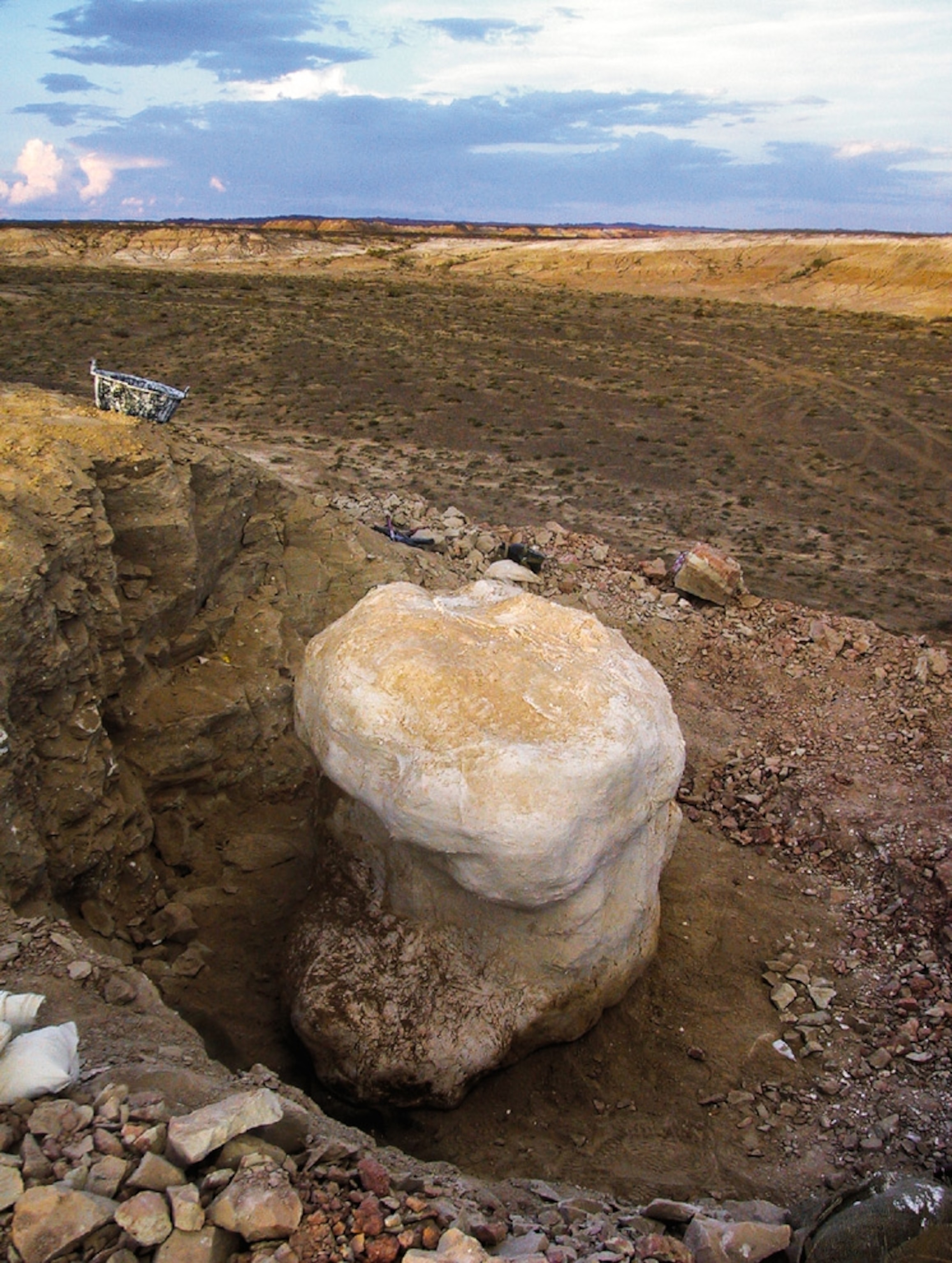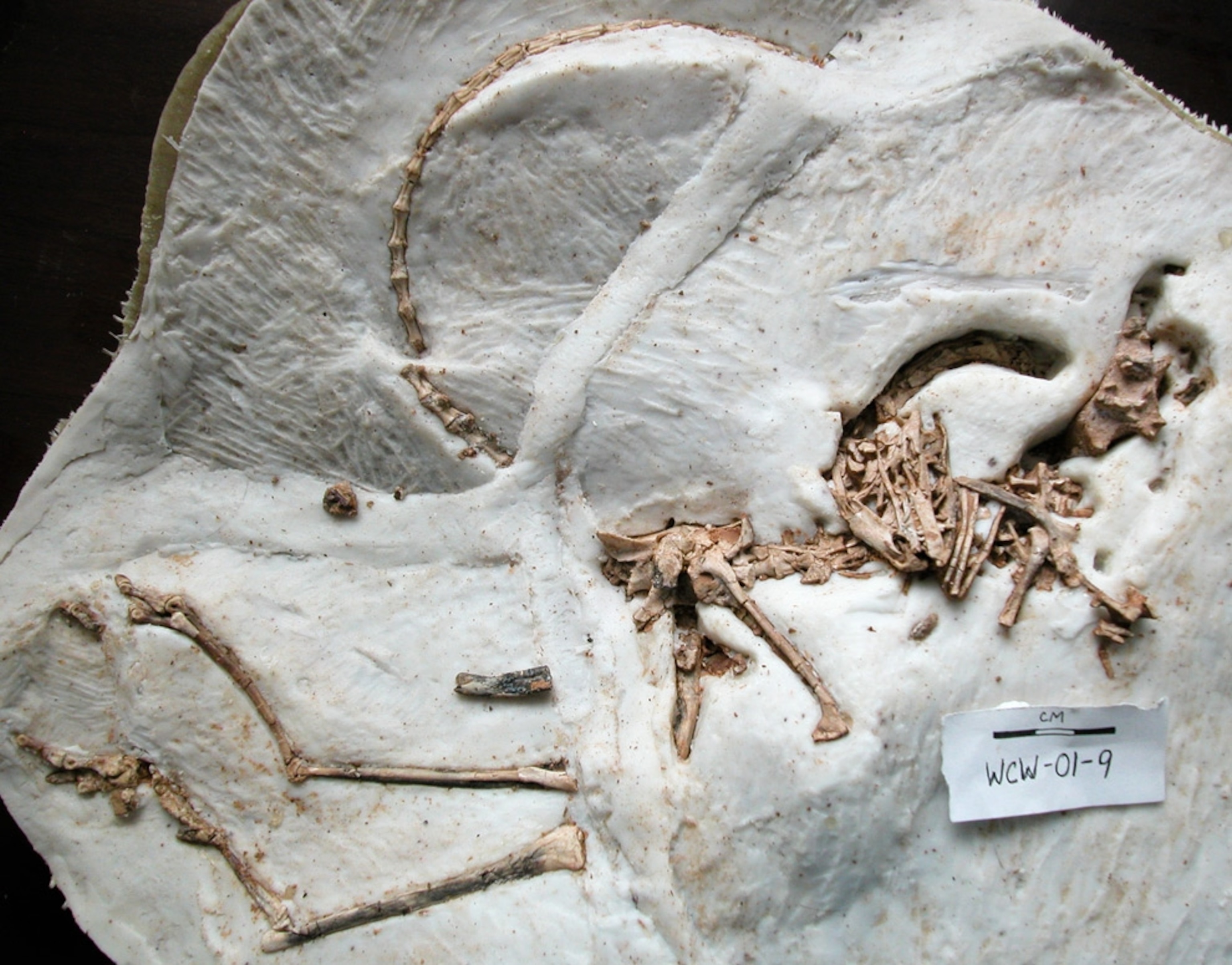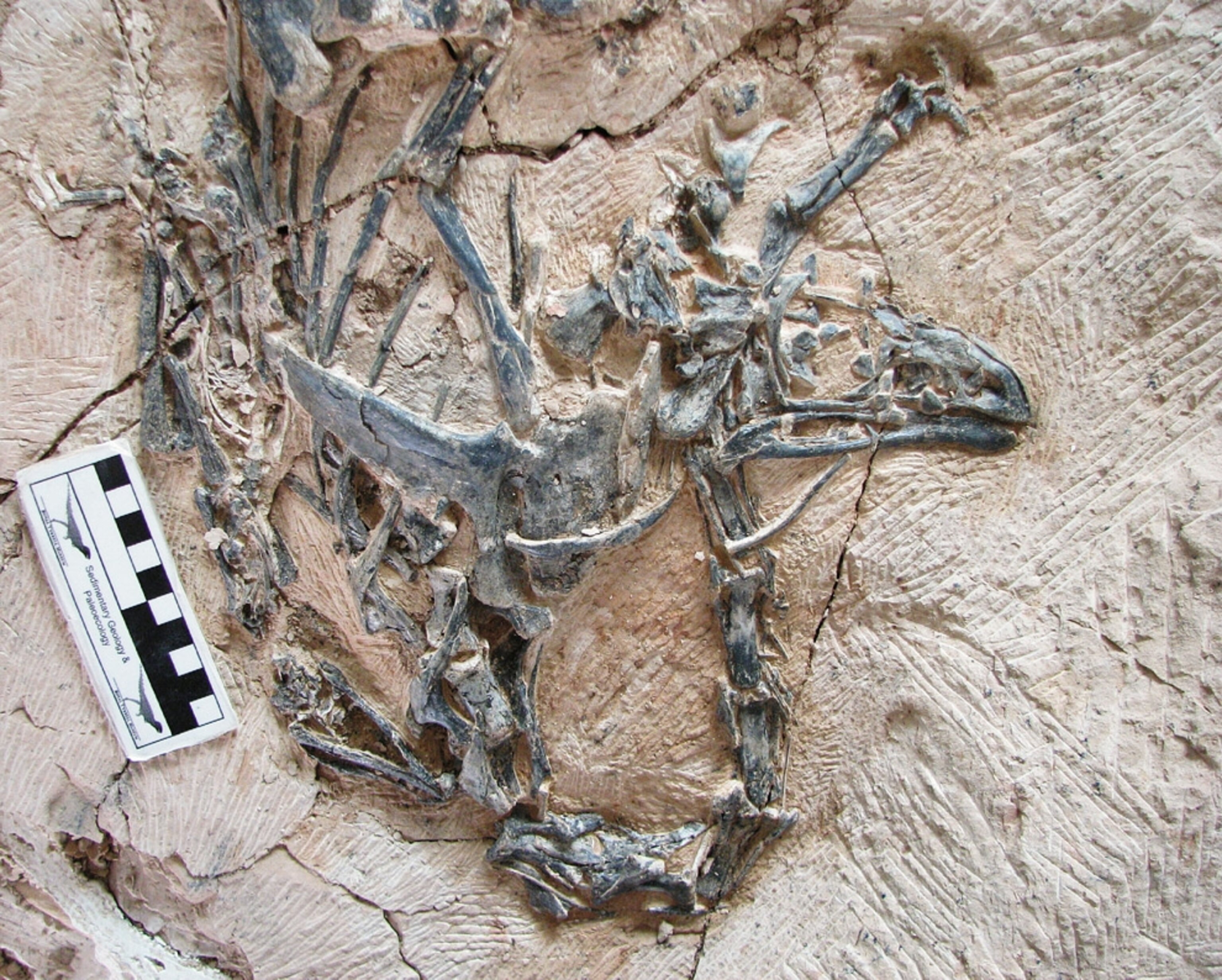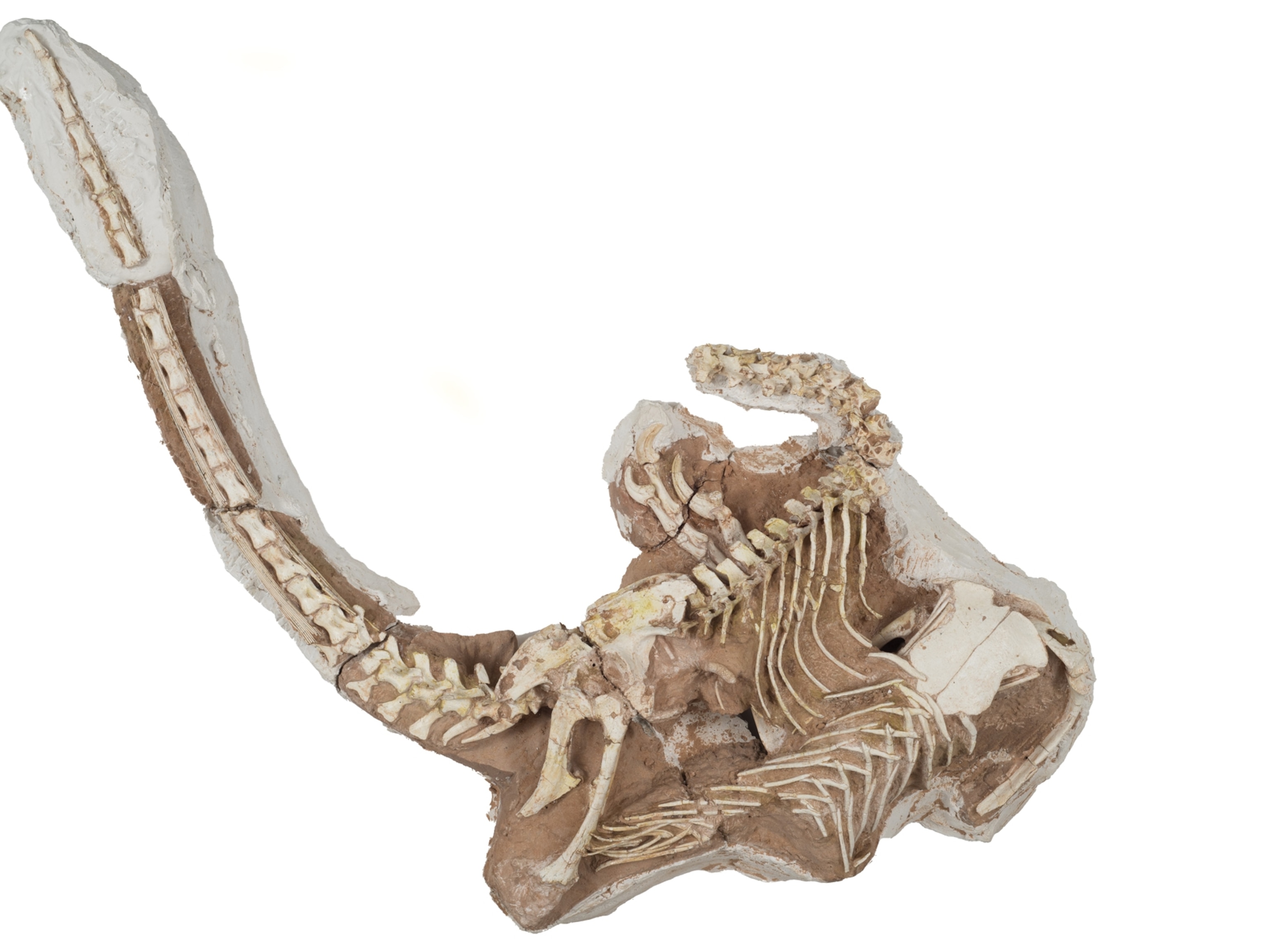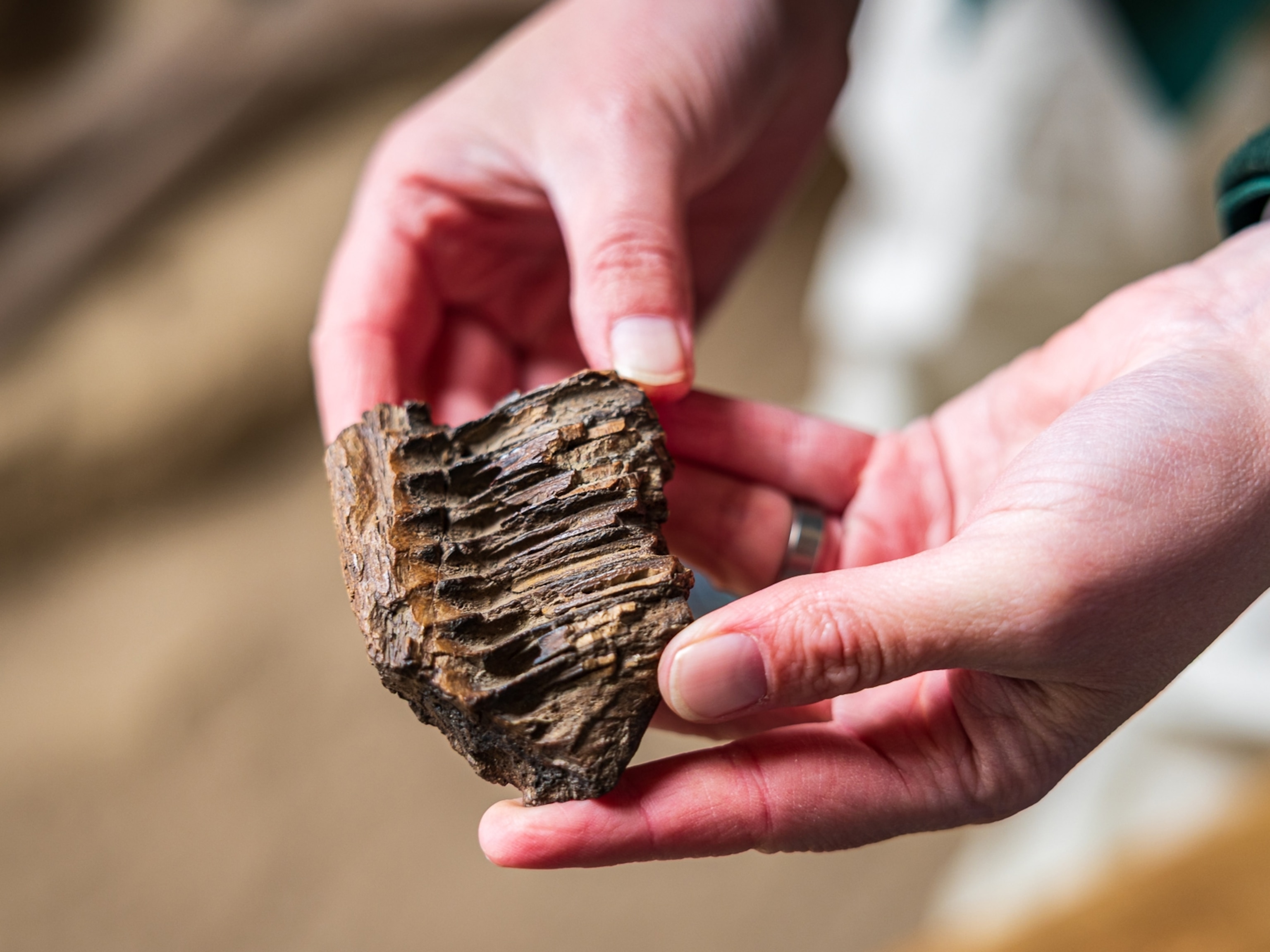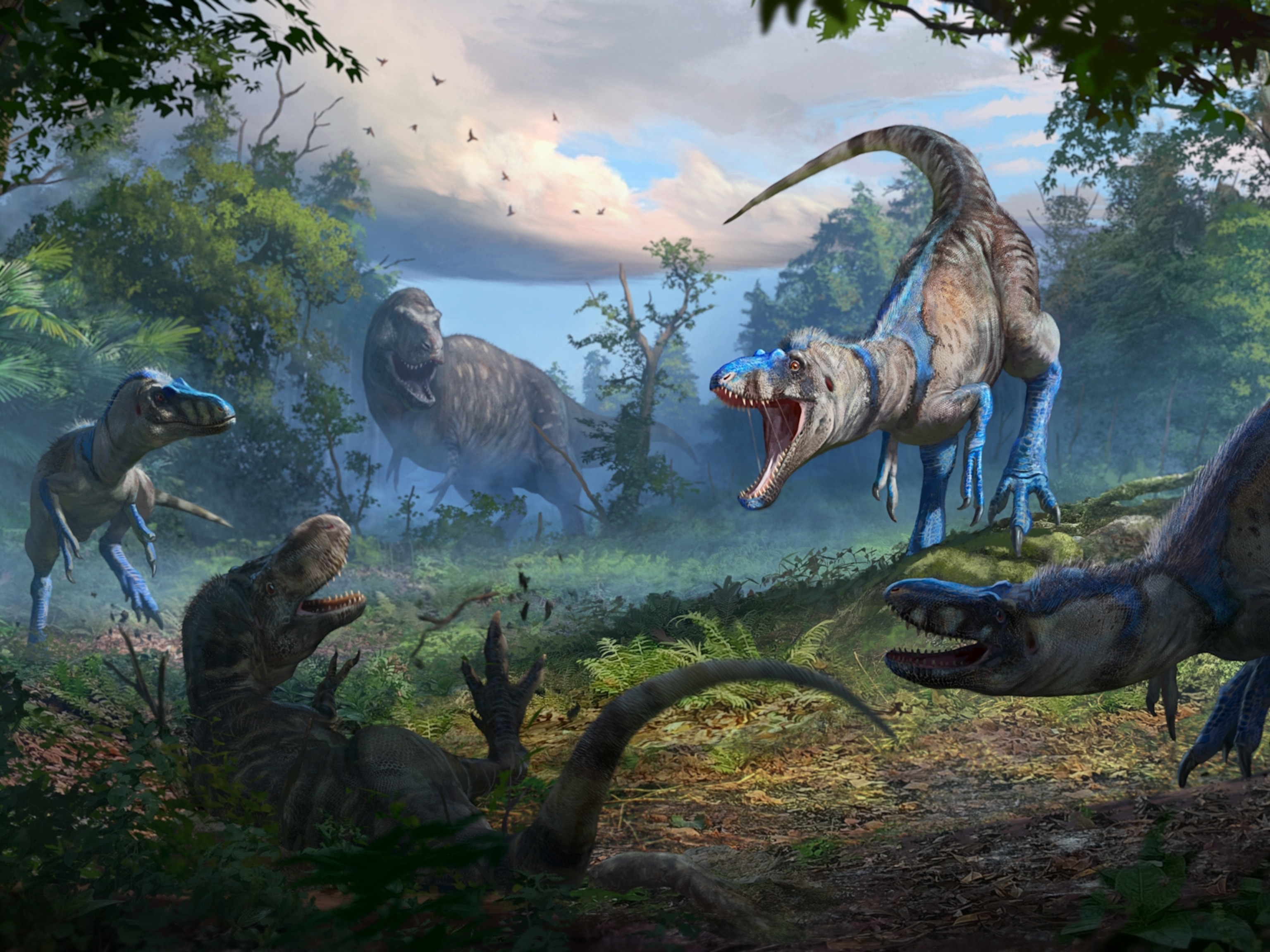Illustration courtesy Michael Skrepnik
Pictures: Dinosaur "Death Pits" May Be Fossil Footprints
Following in a giant dinosaur's footsteps could be fatal—but not for the reasons you might suspect. A new study suggests that death traps filled with rare raptor fossils may have been created when a behemoth strolled across ashy mud.
January 20, 2010

